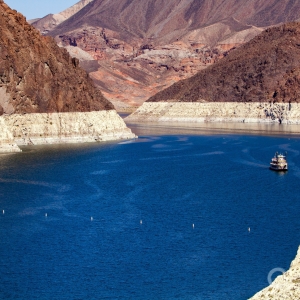The Stream, June 3, 2021: Carbon Pollution From World’s Reservoirs Higher Than Previously Thought
YOUR GLOBAL RUNDOWN
- A new study finds greenhouse gas emissions from the world’s reservoirs are higher than earlier estimates.
- Purchases of farmland in the U.S. Southwest by foreign companies draw attention to water scarcity concerns.
- Germany announced over $1 billion in development funds, including allocations for water supply projects, to Namibia more than 100 years after a mass genocide.
- Rains brought some relief to Taiwan as the island continues to battle extreme drought.
Groundwater depletion in Arizona’s Willcox basin is forcing low-income residents to pay more for water or abandon their homes.
“I have no place to go. I don’t have a job. I can’t afford to pay rent.” – Cynthia Belthan, a resident of Arizona’s Sunizona community. In the Willcox basin of southeast Arizona, officials estimate that more than 100 wells have dried up, the Guardian reports. Many low-income residents, like Belthan, can’t afford to deepen their wells, forcing them to either pay for delivered water, or in many cases, abandon their homes entirely. The area’s aquifer decreased significantly after a dairy operation expanded in 2015 by drilling nearly 80 new wells.
- Why it matters: Groundwater wells across the country being drilled deeper to locate sufficient fresh water supplies, a 2019 study Although the study did not examine the causes of deeper wells, the authors suggested several contributing factors, including contaminated surface water from agricultural runoff. Most distressingly, however, the authors of the study say deeper groundwater wells may be a signal of depletion, that shallower groundwater is being used and an arms race of sorts is occurring underground.
IN RECENT WATER NEWS
Amid Dire Colorado River Outlook, States Plan to Tap Their Lake Mead Savings Accounts
A complex and arcane water banking program in the lower Colorado River basin, adopted in 2007 and later amended, was designed to incentivize water conservation, prevent waste, and boost storage in a waning Lake Mead.
The program has already proved its worth, lifting Lake Mead dozens of feet higher than it otherwise would have been and nurturing collaboration among states that will need to work together to surmount daunting challenges of water availability. In the next two years, the program will be tested in another way, becoming a small but important source of water for Arizona and California even as the lake continues to fall to levels that haven’t been witnessed in several generations.
In Case You Missed It:
HotSpots H2O: When War Destroys Water Systems, Children Suffer the Most – When water and sanitation networks are destroyed during armed conflict, children are harmed the most, according to a UN agency report.
Foreign Companies Draw Attention To U.S. Agricultural Industry
Foreign companies are worsening the water crisis in the American Southwest, Undark reports. Over the last two decades, companies outside of the United States have purchased more than 250,000 acres of land across six Southwestern states, using already scarce groundwater to grow crops and raise livestock. Undark’s reporting found that although the companies’ intent — to produce crops — doesn’t differ all that much from large-scale American-owned farms, their implications for food and water scarcity have drawn attention to the industry’s water use.
TODAY’S TOP WATER STORIES, TOLD IN NUMBERS
$1.3 BILLION
Germany announced it will provide $1.3 billion in financial aid to Namibia over the next 30 years to projects including water supply. Al Jazeera reports the move comes after years of negotiations with the Namibian government, which sought reparations and acknowledgement for the genocide of at least 75,000 Ovaherero and Nama people by German settlers in the early 1900s. Descendants of the Ovaherero and Nama people are concerned that because they weren’t included in the negotiations, the funding will not go towards needed projects in their communities.
29 PERCENT
A new study in the journal Global Biogeochemical Cycles found that greenhouse gas emissions from the world’s reservoirs are around 29 percent higher than previous studies suggested. The study recommends selectively withdrawing water from the reservoirs’ surface, which could reduce methane emissions downstream.
ON THE RADAR
Taiwan officials canceled a plan to extend water service cuts by eight hours a week after rains boosted reservoir levels. Focus Taiwan reports that Taiwan, a place typically rich in rainfall, went without a major typhoon last year. Climate change, along with increased water use, has resulted in the worst drought since 1964.
Jane is a Communications Associate for Circle of Blue. She writes The Stream and has covered domestic and international water issues for Circle of Blue. She is a recent graduate of Grand Valley State University, where she studied Multimedia Journalism and Women, Gender and Sexuality Studies. During her time at Grand Valley, she was the host of the Community Service Learning Center podcast Be the Change. Currently based in Grand Rapids, Michigan, Jane enjoys listening to music, reading and spending time outdoors.







Leave a Reply
Want to join the discussion?Feel free to contribute!